The success of any e-commerce website depends on e-commerce SEO because it drives traffic while boosting visibility to increase sales numbers. The optimization of e-commerce websites for better SERP positions makes up E-commerce SEO. The complete e-commerce SEO guide shows both new and experienced users how to strengthen their SEO efforts while developing their online store operations.
Why E-commerce SEO Matters
E-commerce SEO is a cost-effective marketing strategy that can significantly impact your online store’s performance. Properly optimizing your site can increase organic traffic and drive customers to your product pages. E-commerce SEO directly influences rankings, and improving your site’s visibility on Google search results will ultimately lead to higher conversions and sales.
Organic traffic generated through e-commerce SEO is especially important because it is often more cost-effective than paid advertising campaigns. As many e-commerce businesses can attest, building a solid SEO strategy helps you rank for a search term, which improves brand awareness and leads to better conversion rates. This SEO strategy focuses on long-term success through on-page optimization, quality content, and effective internal linking.
Current Trends in E-commerce SEO
The online search engine optimization environment for e-commerce will continue to transform in 2024. Maintaining your competitive position in the market requires following the latest trends because search engines advance their capabilities.
1. Technical SEO
E-commerce SEO requires technical SEO to be its foundation for success. A weak SEO performance can emerge from problems with site structure combined with duplicate content and thin content. The resolution of technical SEO matters including broken links together with missing canonical tags and slow page loading speeds becomes possible by conducting standard site audits at regular intervals. When implemented correctly technical SEO gives search engines easy access to index and crawl your site pages.
2. Voice Search Optimization
Voice search optimisation requires growing attention as virtual assistants Siri and Alexa become more popular. Enhancing your content for voice search queries by making it match natural verbal inquiries will boost your chance of getting listed for such phrases. Include extended search terms in product descriptions along with category page material.
3. Mobile Optimization
In 2024, mobile optimization is crucial. The mobile sector leads e-commerce revenue at 60% thus making your website mobile-friendly will provide users with seamless shopping experiences. A mobile-optimized website plays a role in Google search rankings because sites without such optimization can underperform within search engine results pages (SERP).

Best Practices for E-commerce SEO
Here are the essential e-commerce SEO best practices to follow:
1. Keyword Research
Keyword research is the backbone of any e-commerce SEO strategy. By identifying search terms your audience will likely use, you can ensure your product and category pages are optimized for those terms.
You can access keyword suggestions through Google Keyword Planner or Google Analytics to match your product selection. Choose a combination of short-tail and long-tail keywords to fulfill distinct search purposes.
2. On-Page Optimization
Cheap Online Store guarantees better search engine rankings through proper page optimization techniques. Your advertising content must contain proper keywords which should appear in all titles as well as descriptions on product displays and category-based pages. Join informational keywords to your blog setup and other site pages and integrate product-related keywords and service descriptions. The content must be original throughout all site pages so duplicate content should be strictly avoided.
3. Backlinks and Internal Linking
The enhancement of SEO link authority depends on the creation of backlinks and effective internal linking. You should implement internal linking that connects product pages with category pages in order to enhance both user experience and SEO rankings. Your website authority improves so does the chances to rank for competitive keywords when you obtain high-quality backlinks from trusted sources.
4. Fix Technical SEO Issues
The evaluation of your site through an auditing process lets you detect and solve various technical SEO problems including loading speed issues as well as broken connections and missing schema markup. Search engine crawling and indexing of your e-commerce website depends directly on these technical requirements. Your Google search results become more noticeable when you apply schema markup correctly to each product page.
5. Optimize for Algorithm Updates
Google algorithm adjustments have the power to modify your website ranking position. Your SEO rank depends on both staying up to date about algorithm modifications and modifying your SEO strategy to match these changes. Your competitive SEO position will stay strong by incorporating internal linking along with optimizing content marketing and prioritizing high-quality product descriptions.

The Role of Web Design in E-commerce SEO
The way your e-commerce web page is designed determines its SEO success rate. All types of users benefit from a clear site structure because they can locate products more efficiently while search engines can better understand the website content.
1. Site Structure
A well-structured site layout enables customers and search engines to find their way while browsing the site. Your site must have descriptive category and product page URLs that also maintain proper organization. Your product organization can enhance usability and SEO performance by placing them in appropriate categories with subcategories.
2. Mobile-Friendly Design
Mobile optimization serves as a Google ranking factor so website owners should verify that their sites work effortlessly on mobile devices. Shopify enables its store owners to utilize mobile-responsive themes for creating e-commerce sites that deliver productivity across all devices.
3. Improve User Experience
Online user satisfaction through website design creates lower bounce rates while boosting website engagement. Product options coupled with maximum usability make websites less likely to lose customers while boosting conversions which results in enhanced search engine positions.
Shopify and E-commerce SEO
Shopify store owners must prioritize SEO optimization of their stores for Google search result rankings. Best Shopify optimization practices include the application of canonical tags to stop duplicate content as well as detailed product descriptions and the use of Google Search Console with assistance from Shopify experts. Shopify delivers multiple tools that enable users to embed schema markup along with improving site structure and enhancing on-page optimization.
Why E-commerce SEO Works for Many E-commerce Businesses
Online business owners demonstrate that e-commerce SEO generates superior returns compared to paid search advertising services. The optimization process leads to site rankings for product-related keywords that gradually increases website traffic during extended periods. The analytics tool of Google can deliver measurements about your complete SEO success which helps guide future changes for better outcomes.
Start Implementing E-commerce SEO
Implementing e-commerce SEO can be the difference between your online store ranking on the first page or being lost in search results. Whether you’re building a new e-commerce site or optimizing an existing one, following the tips in this guide to e-commerce SEO will help you achieve higher rankings, more organic traffic, and, ultimately, better sales.
Are you ready to get started? Contact our eCommerce web design agency to optimize your e-commerce site and grow your business with proven SEO strategies today!



